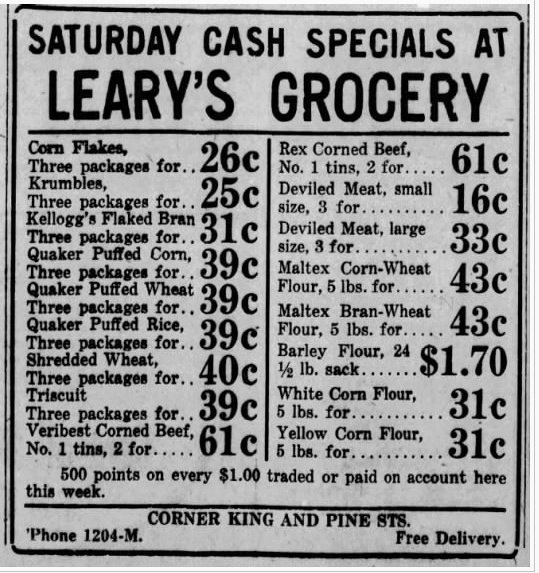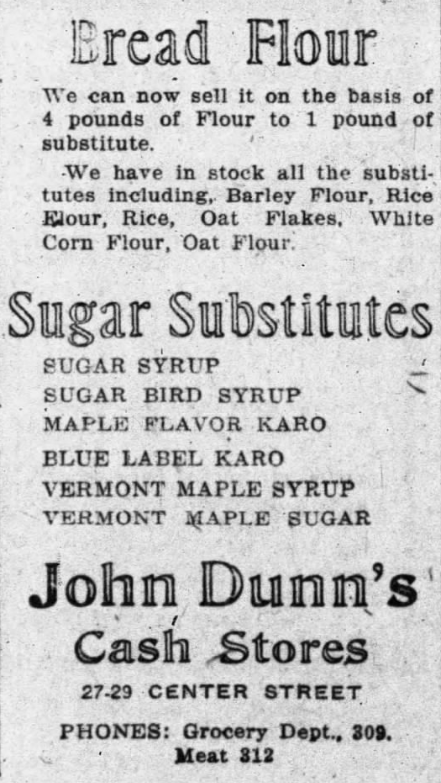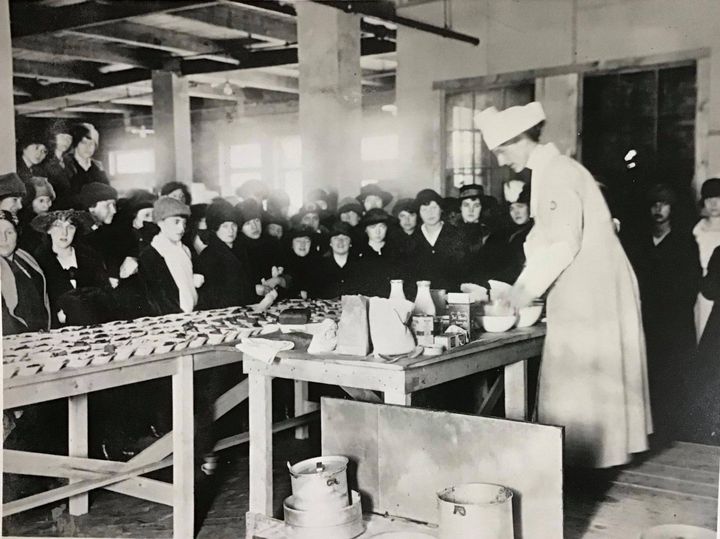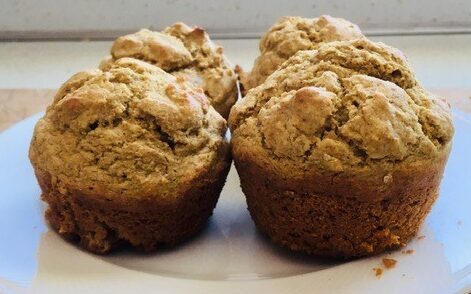When I encountered the 1918 UVM Extension Circular No. 13, “Substitute” Breads, Biscuits and Muffins, I knew I had found the topic for my first post in our year-long Vermont cookbook series. I started substituting whole wheat flour for white when baking bread as a college student in the early 1970s, and over the years have tried many multigrain bread recipes. I was intrigued with Vermont’s responses to the U. S. Food Administration’s wheat conservation efforts during World War I, when wheat (white) flour was needed to feed the troops and starving allies in Europe.
Before Vermont bakers could replace wheat flour in their baked goods, they needed supplies of substitute flours. The August 9, 1918 issue of the Essex County Herald (published in Island Pond, Vermont) included a short article on corn flour, reporting that during the last 18 months, the industry increased its output of corn flour 500 percent to meet the demand by converting wheat-milling machinery into corn-milling machinery.
Vermont grocers ran advertisements in newspapers around the state to let bakers know that substitute flours were available. Dunn’s Cash Store stocked all the wheat flour substitutes as well as sugar substitutes, including maple flavor Karo (corn syrup) and Vermont maple syrup and sugar. Leary’s Grocery at the corner of King and Pine Streets in Burlington offered wheat flour mixed with substitute grains for $0.43 per 5-pound bag and white and yellow corn flour for less at $0.31 per bag. A 24.5-pound bag of barley flour was a bargain at $1.70.
The campaign to conserve wheat included a variety of educational initiatives, including newspaper articles, demonstrations and speaking tours, and wide dissemination of recipes. Bertha M. Terrill, professor of home economics at the University of Vermont and State Director of Home Economics for the U.S. Food Administration, led the educational efforts in Vermont in 1918.
Terrill and others arranged cooking demonstrations in factories, at club meetings and in the home economics facilities at UVM. In March, the Civics Department of the Klifa Club, UVM Extension and the U. S. Food Administration sponsored a demonstration at the Vermont Milk Chocolate Company in Burlington. Just before closing, Mrs Julia Dimock demonstrated preparation techniques and distributed recipes and samples to nearly 100 young women. On a Saturday in April, Terrill led a demonstration on substitute cereals at UVM’s Morrill Hall. She assured the audience that making substitutions was comparatively easy. She made and then shared muffins, buckwheat bread, gingerbread and even rarebit (hot cheese sauce) on rice cakes to prove that the results could be delicious. A demonstration at Morrill Hall the following week focused on substituting potatoes for cereal grains.
Terrill shared recipes for baking with substitutes through newspapers, a small cookbook, and UVM Extension publications. Acknowledging that “The present emergency brings its increased problems to every housekeeper because of the higher prices and desire to use supplies to the best advantage,” the Home Economics Club at UVM published Some Thrift Recipes under Terrill’s direction. Introducing a section on substitute breads, the club members assure cooks, “The results from the recipes below are as light and fine-grained as wheat breads, have a delicious flavor and are more healthful.” The Silver Special Collections copy of Some Thrift Recipes was originally part of the Bertha M. Terrill Memorial Library, and is signed “Bertha M. Terrill 1917-1918.”
Terrill’s UVM Extension circular, “Substitute” Breads, Biscuits and Muffins, provides many more recipes and more detailed guidance about baking with substitute grains. Terrill explains why wheat and rye are superior for yeast breads and why baking powder is a better leavening agent for substitute grains. While the recipes include some wheat and substitute flour combinations, Terrill promoted recipes using substitute grains only. The results would be delicious and wholesome, she said, and “give opportunity to be 100% patriotic by using 100 percent wheatless materials.” She acknowledged that the substitute flours cost more than wheat, but reminded Vermonters, “We are asked to regard this as one of the costs of war.”
I made three of Terrill’s recipes from the Extension circular using corn flour, buckwheat flour, and rolled oats. I had buckwheat flour and rolled oats in my cupboard, but when I could not find corn flour in Burlington-area stores, I ordered it online. I followed Terrill’s advice and stuck to recipes calling for baking powder, choosing buckwheat and corn muffins, corn flour biscuits, and oat and corn flour bread. The muffins had a great flavor and a nice texture and were very hearty. The recipe called for just 1 tablespoon fat and 1 tablespoon sugar or 2 tablespoons of syrup, but the next time I make them (I still have lots of corn flour), I will use a bit more of both. After a day, the leftover muffins were a bit dry, but split and toasted, we agreed with Terrill that they “could hardly be distinguished from freshly baked.” We liked the flavor of the bright yellow corn flour biscuits and the quick bread (four tablespoons of maple syrup), but each had texture problems: the biscuits were dense and the bread crumbled easily.
In my enthusiasm for the substitute grains project, I also purchased white and brown rice flour. I look forward to trying Terrill’s recipes for muffins and quick breads that combine rice flour with rolled oats, buckwheat flour or barley flour.
Submitted by Prudence Doherty, Public Services Librarian




